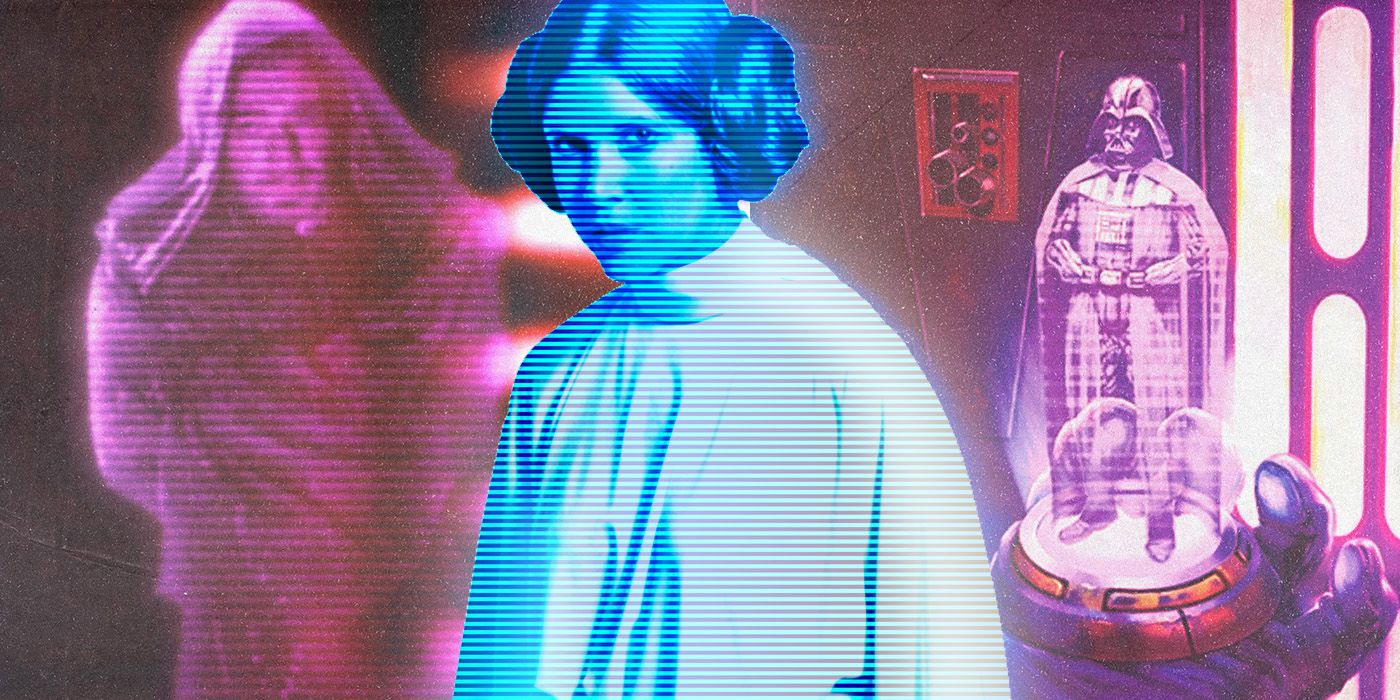Within the vast Star Wars galaxy, every galactic power from the Empire to the High Republic has needed a way to reliably communicate across Star systems. Without some form of communication technology, running a Galactic government, coordinating military assignments, or relaying urgent messages would be logistically impossible. Star Wars characters therefore often use holograms to communicate. As three-dimensional projections of their senders and receivers, holograms functioned like 3D video calls, allowing beings dozens of light years apart to both hear and see each other in real-time.Holograms have become a hallmark of Star Wars, and they feature in all the franchise’s screen offerings. The holoprojectors used to create them vary in shape and size, from common handheld devices to huge and elaborate machines. Because of this, holograms come in many different shapes, sizes, and image qualities in Star Wars, from distorted blue-tinted projections to more advanced full-color versions. Their uses extended beyond just communication, with further uses in mission planning and espionage. Even during the Clone Wars, hologram technology was much more powerful and versatile than the faded images of the Original Trilogy might suggest, with many species and engineers producing their own visually distinct advanced holograms.Certain holograms use different technical methods from the usual blue scan lines to achieve their images. For example, the holoprojector at the Umbaran airbase in The Clone Wars used thousands of individual glowing cubes. When a recording was relayed to the projector, these cubes would combine, creating a pixelated version of the recording featuring uniquely distorted sound. Morgan Elsbeth recently used unusual holograms in Ahsoka; the projections on her ship appeared like strange dust, capable of forming itself into high-quality, full-color images. It seems, therefore, that holograms can work in a variety of different ways, with some specialized holographic methods proving more impressive than typical holograms. For standard holograms, the image quality would vary depending on the power of the holographic projector used, with handheld holoprojectors producing more distorted images than table-sized devices.
Within the vast Star Wars galaxy, every galactic power from the Empire to the High Republic has needed a way to reliably communicate across Star systems. Without some form of communication technology, running a Galactic government, coordinating military assignments, or relaying urgent messages would be logistically impossible. Star Wars characters therefore often use holograms to communicate. As three-dimensional projections of their senders and receivers, holograms functioned like 3D video calls, allowing beings dozens of light years apart to both hear and see each other in real-time.
Holograms have become a hallmark of Star Wars, and they feature in all the franchise’s screen offerings. The holoprojectors used to create them vary in shape and size, from common handheld devices to huge and elaborate machines. Because of this, holograms come in many different shapes, sizes, and image qualities in Star Wars, from distorted blue-tinted projections to more advanced full-color versions. Their uses extended beyond just communication, with further uses in mission planning and espionage. Even during the Clone Wars, hologram technology was much more powerful and versatile than the faded images of the Original Trilogy might suggest, with many species and engineers producing their own visually distinct advanced holograms.
Certain holograms use different technical methods from the usual blue scan lines to achieve their images. For example, the holoprojector at the Umbaran airbase in The Clone Wars used thousands of individual glowing cubes. When a recording was relayed to the projector, these cubes would combine, creating a pixelated version of the recording featuring uniquely distorted sound. Morgan Elsbeth recently used unusual holograms in Ahsoka; the projections on her ship appeared like strange dust, capable of forming itself into high-quality, full-color images. It seems, therefore, that holograms can work in a variety of different ways, with some specialized holographic methods proving more impressive than typical holograms. For standard holograms, the image quality would vary depending on the power of the holographic projector used, with handheld holoprojectors producing more distorted images than table-sized devices.
#Hologram #Technology #Star #Wars #Explained
Note:- (Not all news on the site expresses the point of view of the site, but we transmit this news automatically and translate it through programmatic technology on the site and not from a human editor. The content is auto-generated from a syndicated feed.))



